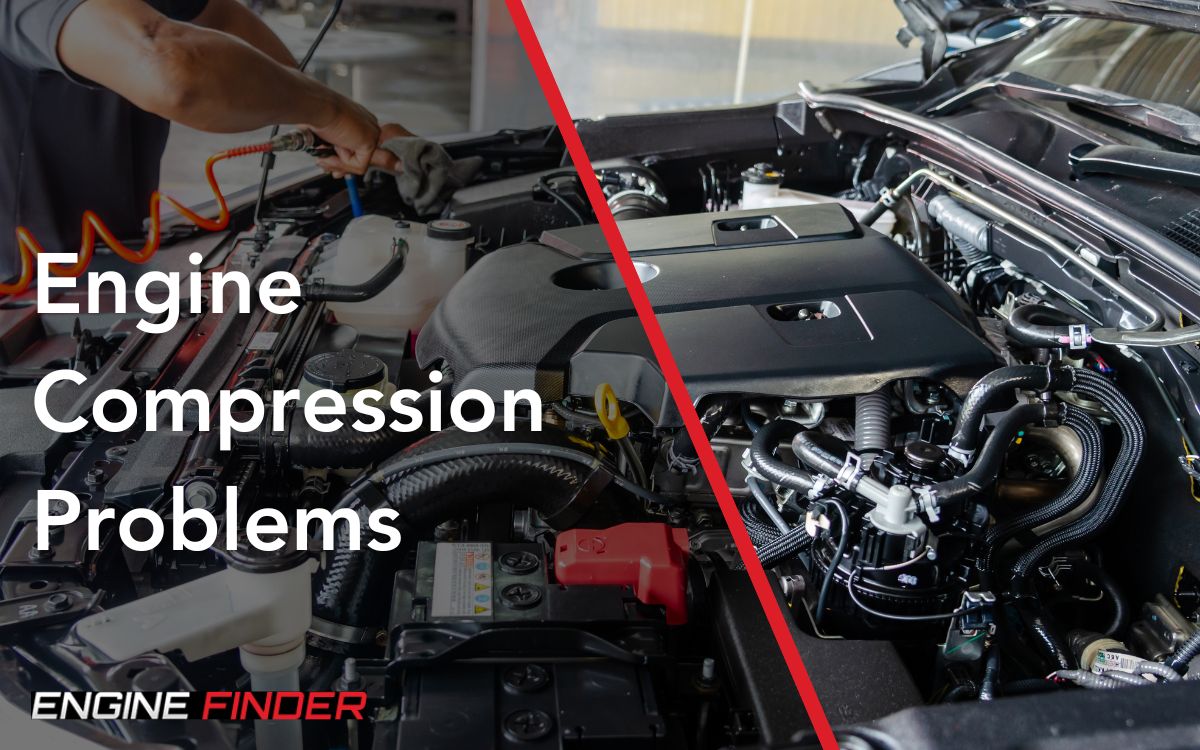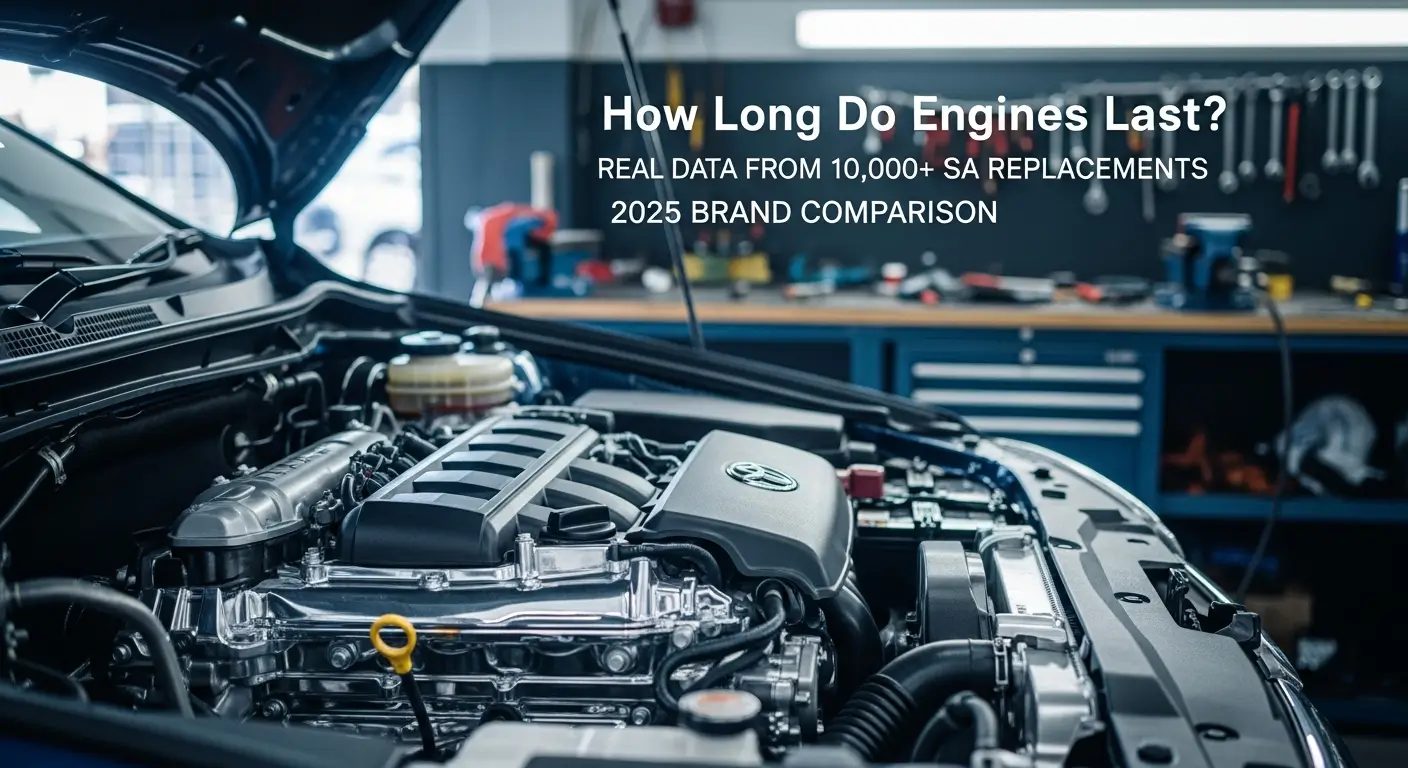
Engine Compression Problems: A Comprehensive Guide
Key Takeaways
| Problem | Main Symptoms | Possible Causes |
|---|---|---|
| Head Gasket Failure | Coolant leaks, white smoke, overheating | Overheating, age, poor maintenance |
| Worn Piston Rings | Excessive oil consumption, blue smoke | Engine wear, poor lubrication |
| Broken Valve | Misfiring, rough idle, reduced power | Timing issues, overheating, wear |
| Leaking Valves | Compression loss, misfire, poor economy | Valve seal failure, carbon buildup |
| Cracked Cylinder Wall | Coolant in oil, excessive smoke | Overheating, freezing, engine stress |
| Carbon Buildup | Engine knocking, reduced efficiency | Poor fuel quality, irregular maintenance |
🔧 Equipment Needed: Compression tester, spark plug tools, multimeter
💰 Diagnostic Cost: R800-R1,500 for professional compression test
⏱️ Repair Time: 2-40 hours depending on problem severity
Overview
Engine compression problems are among the most serious issues that can affect your vehicle’s performance and reliability. At Engine Finder, we understand the complexities of engine compression issues and are here to guide you through identifying, diagnosing, and resolving these critical problems that can affect everything from fuel economy to complete engine failure.
Engine Compression Diagnostic Specifications
| Specification | Details |
|---|---|
| Normal Petrol Engine | 120-180 psi (8.3-12.4 bar) |
| Normal Diesel Engine | 275-400 psi (19-27.6 bar) |
| Cylinder Variation | Within 10% between cylinders |
| Test Temperature | Engine at operating temperature |
| Minimum Acceptable | Above 100 psi (petrol), 250 psi (diesel) |
| Test Equipment | Compression gauge, spark plug tools |
| Testing Frequency | Annually or every 20,000 km |
| Professional Diagnosis | R800-R1,500 cost range |
Common Causes of Engine Compression Problems
Head Gasket Failure
- Symptoms: Coolant leaks, white smoke from the exhaust, overheating engine.
- Diagnosis: Compression test or a coolant system pressure test.
- Solution: Replacing the head gasket and ensuring the surface is flat.
- Prevention: Regular maintenance checks and timely coolant changes.
For more on head gasket issues, check out our guide on gasket problem fixing.
Decrepit Timing Belt
- Symptoms: Ticking noise from the engine, engine won’t turn over, oil leaking from the motor.
- Diagnosis: Visual inspection for wear or damage.
- Solution: Replacing the timing belt before it breaks.
- Prevention: Adhering to the manufacturer’s recommended replacement intervals.
Learn the intricacies of timing belt maintenance at timing belt/chain repair.
Worn Piston Rings
- Symptoms: Excessive oil consumption, smoke from the exhaust, low power.
- Diagnosis: Oil control ring test or compression test.
- Solution: Replacing piston rings and possibly honing the cylinder walls.
- Prevention: Regular oil changes and using quality oil.
For a deep dive into piston ring issues, visit valve and piston troubles.
Broken Camshaft
- Symptoms: Vehicle does not start, loss of engine power, poor acceleration.
- Diagnosis: Camshaft position sensor test or visual inspection.
- Solution: Camshaft replacement and ensuring proper lubrication.
- Prevention: Regular oil changes and using the correct oil grade.
Piston Hole
- Symptoms: Rough running engine, misfiring, loss of power.
- Diagnosis: Compression test and visual inspection.
- Solution: Engine rebuild or replacement.
- Prevention: Avoiding engine knocking and overheating.
Pro Tip: To accurately assess your engine’s health, understanding its compression ratio is crucial. Use our compression ratio calculator to get a better insight into the efficiency and performance of your engine.
Broken Valve
- Symptoms: Misfiring, rough idle, reduced power.
- Diagnosis: Leak down test or visual inspection.
- Solution: Valve replacement or complete cylinder head overhaul.
- Prevention: Regular maintenance and valve adjustments.
For more on valve issues, explore engine noise solutions.
Leaking Valves
- Symptoms: Compression loss, misfire, and poor fuel economy.
- Diagnosis: Compression test or cylinder leak down test.
- Solution: Valve seal or valve guide replacement.
- Prevention: Regular engine check-ups and timely repairs.
Cracked Cylinder Wall
- Symptoms: Coolant in the oil, excessive smoke, loss of power.
- Diagnosis: Pressure test and visual inspection.
- Solution: Engine block replacement or repair.
- Prevention: Avoiding overheating and using proper coolant mix.
Pistons and Valve Problems
- Symptoms: Knocking noises, compression loss, and exhaust smoke.
- Diagnosis: Compression test and visual inspection.
- Solution: Replacing or repairing damaged pistons and valves.
- Prevention: Regular maintenance and using high-quality fuel.
For a comprehensive look at piston and valve issues, visit valve-piston-troubles.
Broken Piston Ring
- Symptoms: Excessive oil consumption, smoke from the exhaust, loss of power.
- Diagnosis: Compression test and oil leak down test.
- Solution: Replacing piston rings and possibly machining the cylinder.
- Prevention: Regular oil changes and avoiding engine over-revving.
Burnt Exhaust Valve
- Symptoms: Misfiring, backfiring, and loss of engine power.
- Diagnosis: Compression test and visual inspection.
- Solution: Valve replacement and checking for other exhaust system issues.
- Prevention: Regular engine tune-ups and exhaust inspections.
For more on exhaust valve issues, see exhaust system troubleshooting.
Carbon Buildup
- Symptoms: Engine knocking, reduced fuel efficiency, and rough idle.
- Diagnosis: Visual inspection and performance tests.
- Solution: Decarbonizing the engine and cleaning intake valves.
- Prevention: Using quality fuel and regular engine cleaning.
Explore engine sludge solutions for more on combating carbon buildup.
Dropped Valve
- Symptoms: Sudden loss of power, loud noises from the engine, and inability to start.
- Diagnosis: Visual inspection and disassembly of the cylinder head.
- Solution: Cylinder head rebuild or replacement.
- Prevention: Regular valve clearance checks and maintenance.
How To Do A Compression Test
Step-by-Step Compression Testing Process:
- Prepare the Engine: Warm up engine to operating temperature, then turn off
- Remove Spark Plugs: Remove all spark plugs from engine cylinders
- Connect Compression Tester: Thread tester into spark plug hole
- Disable Ignition: Disconnect ignition coil or remove fuse
- Crank Engine: Have assistant crank engine for 4-6 compression strokes
- Record Reading: Note the maximum pressure reading on gauge
- Repeat for All Cylinders: Test each cylinder and compare readings
- Analyze Results: Normal readings should be within 10% of each other
Normal Compression Ranges:
- Petrol Engines: 120-180 psi (8.3-12.4 bar)
- Diesel Engines: 275-400 psi (19-27.6 bar)
Professional Engine Compression Services
Diagnostic Services
- Basic Compression Test: R800-R1,200 (2-3 hours)
- Complete Engine Diagnosis: R1,200-R2,500 (4-6 hours)
- Leak-Down Testing: R950-R1,800 (3-4 hours)
- Mobile Compression Testing: R1,200-R2,200 (includes callout)
Repair Services
- Valve Adjustments: R800-R1,500 (3-5 hours)
- Head Gasket Replacement: R8,000-R15,000 (12-20 hours)
- Piston Ring Replacement: R12,000-R25,000 (15-25 hours)
- Complete Engine Rebuild: R35,000-R80,000 (40-80 hours)
Video Guides
How to Perform a Compression Test - EricTheCarGuy
EricTheCarGuy provides professional-level instruction on performing accurate engine compression tests, including proper technique and result interpretation.
How to Compression Test Your Engine - ChrisFix Style
This detailed guide shows the complete compression testing process using basic tools, perfect for DIY mechanics in South Africa.
Frequently Asked Questions
What is considered low engine compression?
Compression readings below 100 psi (6.9 bar) for petrol engines or below 250 psi (17.2 bar) for diesel engines are typically considered low. However, the most important factor is consistency between cylinders - readings should be within 10% of each other.
Can low compression be fixed without rebuilding the engine?
Some compression issues can be resolved without full rebuilds. Solutions include valve adjustments, head gasket replacement, or piston ring replacement. However, severe cases like cracked cylinder walls may require complete engine rebuilds.
How much does it cost to fix engine compression problems in South Africa?
Costs vary significantly based on the root cause:
- Valve adjustments: R800-R1,500
- Head gasket replacement: R8,000-R15,000
- Piston ring replacement: R12,000-R25,000
- Complete engine rebuild: R35,000-R80,000
How often should I check engine compression?
Check compression annually or every 20,000 km, especially on high-mileage vehicles. Immediate testing is recommended if you notice symptoms like poor performance, excessive oil consumption, or white smoke from the exhaust.
Can I drive with low engine compression?
Driving with low compression is not recommended as it can cause further engine damage, poor fuel economy, and potential safety issues. Address compression problems promptly to prevent catastrophic engine failure.
What tools do I need for a compression test?
Essential tools include a compression tester gauge, spark plug removal tools, and access to engine ignition system for disabling. Professional-grade compression testers provide more accurate readings than basic models.
Conclusion
Engine compression problems can range from minor valve adjustments to major engine rebuilds, but understanding the symptoms and causes helps you make informed decisions. Regular compression testing every 20,000 km can identify issues before they become catastrophic failures.
For South African vehicle owners dealing with severe compression loss, Engine Finder provides access to quality used engines for sale across the country, offering reliable alternatives to expensive rebuilds when replacement becomes the most economical option.
References and Further Reading
Technical Resources
Diagnostic Guides
Community Resources
Related Articles
Explore more insights on similar topics

How Long Do Engines Last on Average? Complete Longevity Guide
Understand real-world engine lifespan ranges, warning signs, lifecycle stages, costs, and maintenance best practices for South African drivers.

How Does an Engine Overhaul Work? Complete Guide to Engine Rebuilds
Learn everything about engine overhauls: types, warning signs, process, costs, and when to rebuild vs replace your engine in South Africa.
.webp)
Timing Chain vs Timing Belt: Complete Guide to Cambelt Replacement & Lifespan
Learn everything about timing chains and timing belts (cambelts): differences, lifespans, replacement costs, and which is better for your engine in South Africa.
Important Disclaimer
This content is for informational purposes only and is based on research from automotive industry sources. Engine Finder is not a certified automotive repair facility. Always consult with qualified automotive professionals before performing any repairs or maintenance. Improper repairs can result in personal injury, property damage, or vehicle malfunction. We assume no responsibility for actions taken based on this information.
